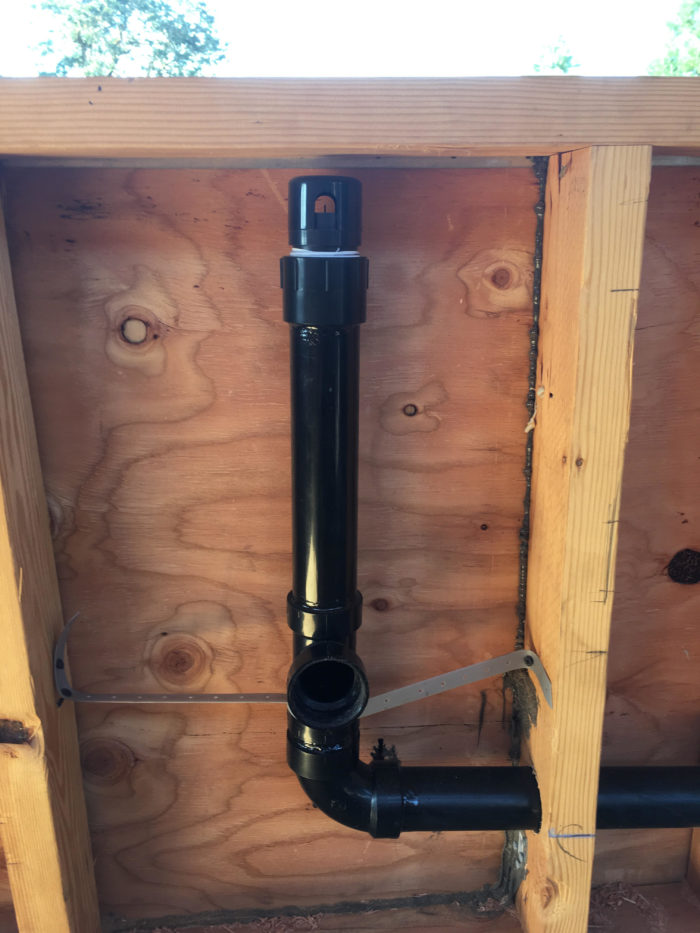How Proper Ventilation in Plumbing Systems
How Proper Ventilation in Plumbing Systems
Blog Article
What're your thoughts with regards to What Is A Plumbing Vent & How Do They Work??

Correct air flow in pipes systems is typically overlooked, yet it is critical for preserving the performance and safety and security of your home's pipes. Air flow aids control atmospheric pressure, stop the build-up of hazardous gases, and ensure the efficient elimination of waste. In this overview, we will certainly discover the importance of appropriate pipes ventilation, just how it works, and the benefits it offers your plumbing system.
Comprehending Air Flow in Pipes
Ventilation in plumbing describes the network of pipelines that permit air to flow via the drainage system. These vents offer several functions, including managing air pressure within the pipelines, stopping sewage system gases from going into the home, and aiding in the smooth circulation of wastewater.
How Air Flow Functions in Pipes Equipments
Atmospheric Pressure Law
Correct air flow keeps balanced atmospheric pressure within the plumbing system. When water flows with pipes, it displaces air. Without sufficient air flow, this displacement can create unfavorable stress, causing slow drains or siphoning of water from traps, which can create undesirable odors to leak into the home.
Protecting Against Sewage System Gas Buildup
One of one of the most important features of plumbing vents is to prevent sewer gases, such as methane and hydrogen sulfide, from building up within the home. These gases can pose serious health and wellness dangers and are very flammable. Vent pipelines enable these gases to escape securely outdoors.
Aiding in Waste Elimination
Ventilation aids in the effective removal of wastewater by avoiding airlocks in the water drainage system. When air can move easily via the vents, it permits water and waste to move efficiently through the pipes, lowering the danger of obstructions and backups.
Kinds Of Pipes Vents
Key Heap Vent
The major pile air vent, also known as the vent stack, is the key vent in a plumbing system. It extends from the major drainpipe align through the roofing system, enabling gases to escape and fresh air to go into the system.
Branch Vent
Branch vents link to the main pile air vent and serve individual fixtures, such as sinks, toilets, and showers. These vents make sure that each component has appropriate ventilation to function correctly.
Air Admission Valve (AAV).
An Air Admittance Valve (AAV) is a one-way valve that allows air to go into the plumbing system without the requirement for a conventional vent pipeline expanding through the roofing system. AAVs are frequently made use of in improvements or areas where installing a common air vent is not practical.
Indicators of Poor Ventilation in Pipes.
Slow Draining Fixtures.
If your sinks, bathtubs, or commodes are draining slowly, maybe a sign of inadequate air flow. Insufficient air flow can produce a vacuum cleaner result, making it hard for water to drain properly.
Gurgling Appears.
Gurgling noises coming from drains are usually a result of air being drawn via water traps due to negative pressure in the pipes. This is a clear indication of not enough air flow.
Undesirable Odors.
Sewer odors inside your home are a red flag that your plumbing system is not effectively ventilated. This might imply that sewer gases are not being properly vented outside, causing potentially dangerous problems.
Common Ventilation Blunders.
Insufficient Vent Sizing.
Utilizing undersized air vent pipes can lead to poor air flow and stress discrepancies in the system. It's vital to use vents that satisfy the specific demands of your plumbing system.
Improper Vent Positioning.
Putting vents also much from the fixtures they offer can decrease their effectiveness. Proper placement makes certain that air can stream openly and successfully via the system.
Ignoring Code Needs.
Building ordinance supply certain guidelines for pipes air flow. Disregarding these codes can cause a system that fails to operate properly and may bring about expensive repairs or carcinogen.
Benefits of Correct Ventilation.
Improved System Performance.
Properly ventilated pipes systems operate extra effectively, with less clogs, faster draining, and less pressure on the pipelines. This efficiency expands the life-span of the plumbing system.
Improved Air Quality.
By protecting against sewage system gases from entering your home, appropriate air flow adds to far better interior air quality, making your living setting healthier and extra comfy.
Preventing Water Damage.
Sufficient ventilation aids protect against water from being siphoned out of catches, which can result in sewer gases getting in the home and triggering water damage with time.
Actions to Ensure Correct Ventilation.
Consulting Pipes Codes.
Constantly speak with neighborhood pipes codes when designing or modifying your pipes system. These codes give the essential standards for appropriate airing vent and guarantee your system meets safety standards.
Regular Examination and Maintenance.
Normal assessments can assist identify prospective air flow issues prior to they end up being major issues. Upkeep tasks, such as cleaning up air vent pipes and looking for blockages, are crucial for keeping the system in good working order.
Specialist Installation.
For brand-new installations or major alterations, it's a good idea to employ a professional plumber. They have the competence to make certain the ventilation system is properly created and installed according to code.
Final thought.
Appropriate air flow is an important element of any kind of plumbing system, guaranteeing that it works successfully and safely. By recognizing the significance of air flow, recognizing the signs of inadequate air flow, and taking steps to keep your system, you can stop pricey problems and safeguard your home's air high quality.
Understanding the Role of Your Plumbing Vents in the Drainage System
The plumbing system in your home is more than just the kitchen sink, toilet, and bathroom. Some problems that arise within home plumbing are hard to detect because homeowners may not understand potential causes.
One part of the plumbing system that could cause you endless problems is the venting. The drain lines that run through your home and drain wastewater need proper venting to function properly. Faulty plumbing vents can lead to several problems that require the expertise of a plumber to check them out. Before finding experienced plumbing services, there are a few things to learn about plumbing vents.
Why vents are vital
Vents in the plumbing system lead to an outside area such as the roof or the back. The function of these vents is to keep sewer gases away from the drain pipes. They also establish seals in the drainage pipes that prevent the sucking back of waste gases into the home. Venting in the plumbing system also allows oxygen to get into the drainage system, which is an essential component in the breakdown of waste matter. The vents also ensure that the air pressure within the drainage system remains balanced, facilitating the flow of wastewater.
Possible problems
When the plumbing vents are problematic, one of the consequences is imbalanced water levels in the toilet. If you notice that the levels in the toilet bowl rise and fall all the time, then there may be something wrong with the vents.
Another issue is air bubble formation within the toilet. In most cases like these, the drain pipes are not receiving enough air. Lack of air pressure equalization is what leads to water flow problems. If you come across such issues in your home, make sure you call professional plumbers, such as the ones from Perfection Plumbing & Drain Cleaning Ltd.
Potential causes
Several scenarios can lead to some of the plumbing problems that homeowners suffer because of venting. One such scenario is the use of incorrectly sized vents. Usually, vents are the same size as the drain line to facilitate proper venting. Vents that are too small will lead to some plumbing issues. Another potential cause is fixtures that are not close enough to the vents. In this scenario, air forces itself through the traps of other fixtures, leading to gurgling sounds from toilets and sinks.
Most of these problems also happen with clogged vents. Tree leaves and debris can cause clogging when they make their way down a vent. Unclogging plumbing vents is a service that you can entrust to Saskatoon plumbers. They will know how to snake down vents and remove clogging stuck in fixtures.

I discovered that piece on Essential Plumbing Vent Pipes: Understanding Their Role when doing a lookup on the internet. Enjoyed reading our content? Please quickly share it. Help others check it out. Many thanks for taking the time to read it.
Call Today Report this page